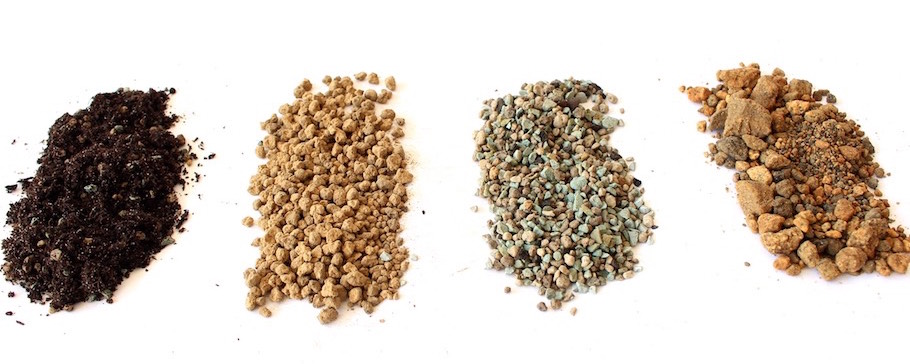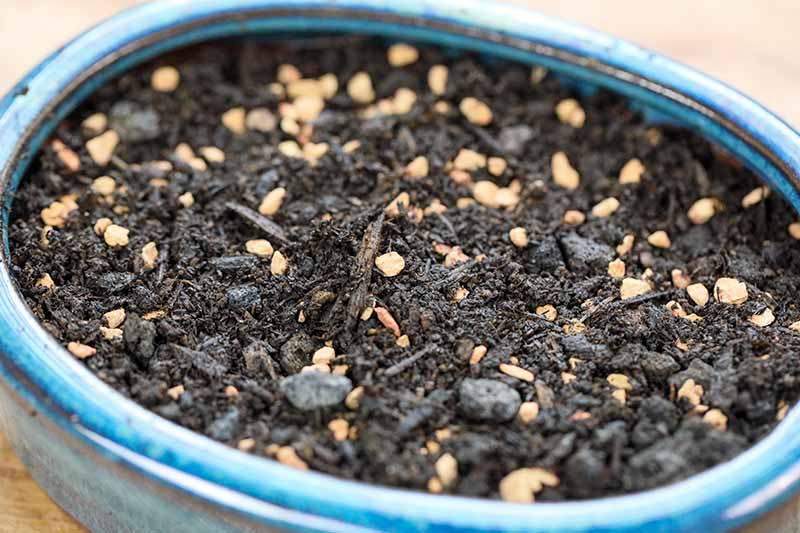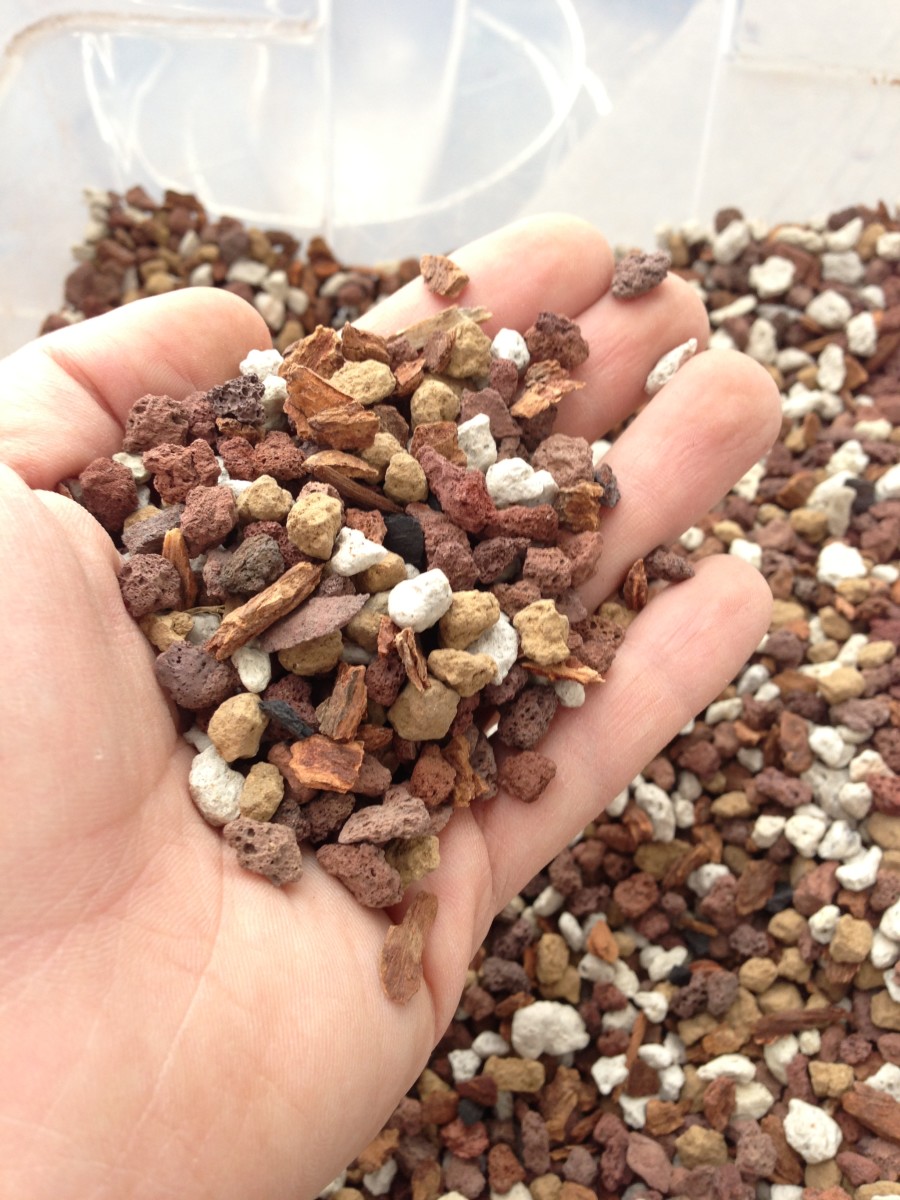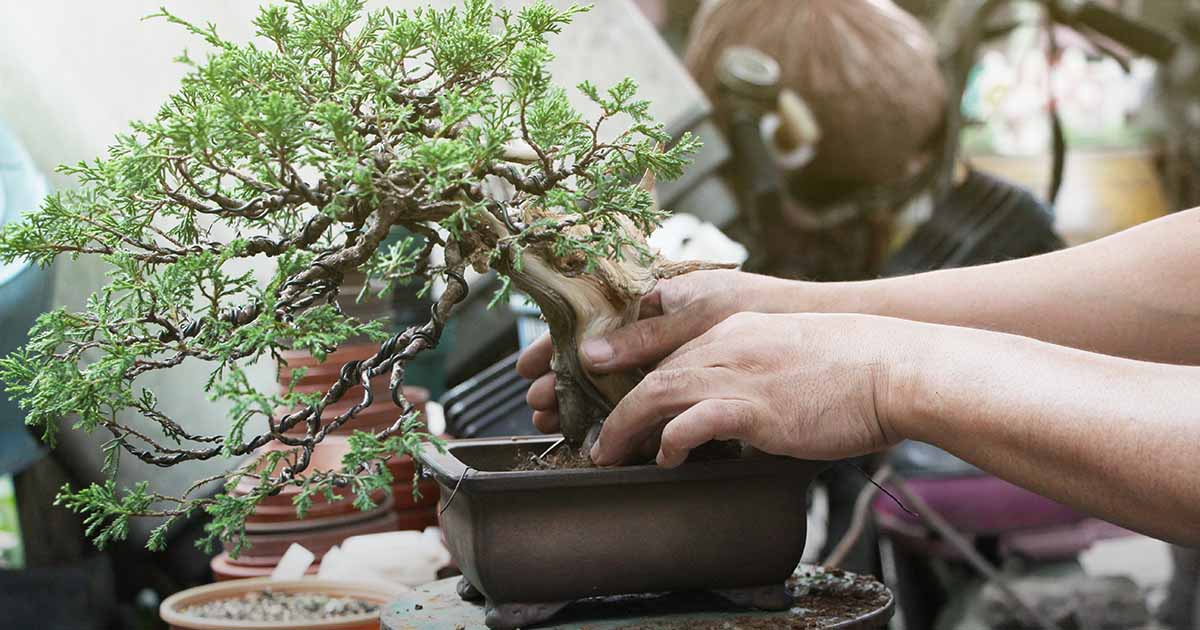New Step by Step Map For Deciduous Bonsai soil
If you've ever been captivated via the art of bonsai, you could be wondering if Unique soil is needed to cultivate these miniature masterpieces. The answer is Sure! Particular soil is essential for the overall health and vitality of bonsai trees.In the following paragraphs, we will examine the differing types of soil and substrates used in bonsai cultivation, like organic and natural and inorganic selections.
We will also find out advisable soil mixtures for different bonsai species, including deciduous, coniferous, and indoor types. From akadama and pumice to moss and river sand, we'll dive in to the interesting globe of bonsai soil and assist you understand why it's a crucial Section of cultivating these exquisite trees.

Bonsai soil
What is bonsai soil?
Bonsai soil is a specialized type of soil that is specifically formulated for growing and maintaining bonsai trees. Unlike regular garden soil, bonsai soil is well-draining and provides the necessary nutrients and moisture balance for the tree's root system. The composition of bonsai soil is carefully designed to meet the unique needs of bonsai trees, ensuring their health and longevity.
The importance of bonsai soil
The choice of soil plays a crucial role in the success of your bonsai tree. The right soil provides optimal drainage, allowing excess water to flow freely and preventing root rot. It also promotes a healthy and well-developed root system, which is essential for the overall health and growth of the tree. Bonsai soil retains moisture while allowing air to reach the roots, striking the perfect balance for the tree's needs. Choosing the right bonsai soil is essential for maintaining a healthy and thriving bonsai tree.
Bonsai substrates
What are bonsai substrates?
Bonsai substrates refer to the different materials that can be used to create the ideal soil composition for bonsai trees. These substrates are carefully chosen to meet the specific needs of different species of bonsai trees and to ensure proper water drainage and nutrient availability.
Different types of bonsai substrates
There are various types of bonsai substrates available, each with its own unique characteristics and benefits. Some common bonsai substrates include:
- Organic materials: These include ingredients such as bark, peat moss, and coconut coir. Organic substrates help retain moisture and provide essential nutrients to the bonsai tree.
- Inorganic materials: These include factors like pumice, lava rock, and akadama. Inorganic substrates deliver great drainage, making certain that extra h2o won't accumulate throughout the roots in the bonsai tree.
- Soil amendments: These are generally substances which have been added to the soil combination to reinforce its Qualities. Examples of soil amendments include perlite, vermiculite, and sand. They improve the soil's aeration, water-Keeping ability, and nutrient availability.
By being familiar with the different types of bonsai substrates as well as their Homes, you'll be able to choose the most fitted one particular on your bonsai tree's needs.
Organic or Inorganic Soils
Natural soils for bonsai
Natural soils for bonsai are composed of purely natural supplies for example bark, peat moss, coconut coir, and compost. These elements offer a wealthy supply of nutrients to the bonsai tree and endorse balanced root growth. Natural soils even have very good water retention Houses, making sure which the tree receives adequate dampness in between watering classes. On the other hand, it is vital to notice that organic soils may perhaps break down after some time and turn out to be compacted, leading to lousy drainage and opportunity root difficulties.
Inorganic soils for bonsai
Inorganic soils for bonsai encompass products like pumice, lava rock, akadama, and soil amendments like perlite or vermiculite. These elements have great drainage Attributes, avoiding waterlogged soil and selling aeration around the roots. Inorganic soils are preferred by lots of bonsai lovers because of their longevity and ability to supply a steady surroundings with the bonsai tree's root procedure. Even so, They might call for extra Recurrent watering and extra fertilization, as they don't keep just as much moisture or nutrients as natural and organic soils.
Pluses and minuses of working with natural and inorganic soils for bonsai
Deciding on concerning organic and inorganic soils for the bonsai tree is dependent upon several elements, including the specific species of tree, your weather, and private preferences. Allow me to share the pros and cons of every:
Organic and natural soils:
- Professionals: Offer nutrients, fantastic drinking water retention, boost healthy root advancement.
- Drawbacks: Might break down after some time, potential for inadequate drainage Otherwise thoroughly preserved.
Inorganic soils:
- Professionals: Great drainage, very long-Long lasting, stable surroundings for roots.
- Negatives: Fewer water retention, might have to have much more Regular watering and fertilization.
By thinking of the pros and cons of each natural and inorganic soils, you may make an knowledgeable choice based on the precise wants of the bonsai tree.
Soil elements
Important parts of bonsai soil
Bonsai soil is usually composed of a few main parts: grit, natural and organic make a difference, and clay. These components do the job together to make The perfect soil framework for the bonsai tree's root method.
- Grit: Grit, for instance sand or perlite, provides drainage and aeration within the soil. It can help avert waterlogging and makes it possible for air to reach the roots.
- Organic and natural make a difference: Natural matter, for example compost or bark, gives nutrients to your bonsai tree. Furthermore, it helps keep moisture and Enhance the soil's General composition.
- Clay: Clay particles present some water retention attributes and aid bind the soil collectively. However, too much clay may result in inadequate drainage and compaction.
Purpose of each and every soil component
Just about every soil ingredient plays a significant job in making a properly-balanced and healthier environment for your bonsai tree's roots.
- Grit: Grit delivers the necessary drainage and aeration in the soil. It helps prevent the roots from sitting down in stagnant drinking water, reducing the risk of root rot and promoting Total root overall health.
- Organic and natural issue: Natural and organic make any difference delivers crucial nutrients to the bonsai tree. It aids in moisture retention and contributes to the overall composition of your soil.
- Clay: Clay particles assist bind the soil jointly and provide some drinking water retention capability. Nonetheless, it is important to equilibrium the amount of clay in order to avoid problems like very poor drainage and compaction.
By knowing the roles of each soil component, you are able to make a balanced bonsai soil combine that satisfies the precise demands of your respective tree.

Recommended Bonsai soil mixtures
Common bonsai soil mixtures
There are several common bonsai soil mixtures that have been proven effective for various types of bonsai trees. These mixtures typically consist of a combination of inorganic substrates, organic matter, and soil amendments.
Some of the commonly used bonsai soil mixtures include:
- Akadama, pumice, and lava rock: This mixture is popular among bonsai enthusiasts for its excellent drainage and water retention properties.
- Akadama, lava rock, and natural and organic issue: This mixture combines the benefits of inorganic substrates With all the nutrient-rich Homes of natural and organic issue.
- Pumice, perlite, and bark: This mixture delivers great drainage and aeration although retaining some moisture and delivering nutrients.
They are just a few samples of bonsai soil mixtures, and the ideal combination will depend upon the particular desires within your bonsai tree and also your weather.
Factors to look at when deciding upon a bonsai soil combination
When picking out a bonsai soil mixture, it's important to consider the subsequent factors:
- Species of bonsai tree: Distinctive species have unique moisture and nutrient prerequisites. Research the specific requirements of your tree to select a soil combination that fulfills its demands.
- Weather: The local weather you live in can have an effect on the moisture retention Attributes in the soil. Look at the common humidity and temperature in your neighborhood When selecting a soil mixture.
- Watering behavior: Your own watering routines and routine really should align Using the soil combination you end up picking. Some mixtures have to have more Repeated watering, while others retain dampness for more time intervals.
- Budget: Some soil elements might be costlier than others. Take into account your funds when selecting a soil combination.
By getting these things into consideration, it is possible to select a bonsai soil mixture that provides the ideal rising situations in your tree.
Deciduous Bonsai soil
Most effective soil composition for deciduous bonsai
Deciduous bonsai trees, such as maple or birch, have precise soil specifications to support their development and health and fitness. The best soil composition for deciduous bonsai ordinarily includes a mix of organic matter, inorganic substrates, and soil amendments.
A suggested soil composition for deciduous bonsai might include things like:
- Akadama: Offers excellent h2o retention when letting for drainage. In addition, it releases nutrients slowly but surely after some time.
- Pumice: Encourages aeration and drainage during the soil, preventing waterlogging.
- Bark or peat moss: Adds organic make a difference into the soil, offering nutrients and dampness retention.
This soil composition makes certain that the roots of deciduous bonsai trees receive the proper harmony of humidity, nutrients, and oxygen for exceptional growth.

Coniferous and Pine soil
Ideal soil mixture for coniferous and pine bonsai
Coniferous and pine bonsai trees have specific soil requirements due to their water retention needs and preference for acidic soil. An ideal soil mixture for coniferous and pine bonsai should provide good drainage while retaining moisture and maintaining the desired pH level.
A recommended soil mixture for coniferous and pine bonsai may include:
- Akadama: Provides excellent water retention while allowing for sufficient drainage. It releases nutrients slowly over time.
- Pumice: Encourages aeration and drainage within the soil, stopping waterlogged roots.
- Peat moss: Adds natural and organic subject and acidity into the soil, creating a super pH level for coniferous and pine trees.
This soil combination makes sure that the roots of coniferous and pine bonsai trees obtain the right stability of humidity, nutrients, and acidity for their precise desires.
Akadama
What on earth is akadama?
Akadama is really a variety of clay soil that is certainly commonly used in bonsai cultivation. It's known for its exceptional h2o retention Houses, which be certain a steady supply of moisture towards the bonsai tree's roots. Akadama can be prized for its power to release nutrients little by little as time passes, supplying a steady supply of nourishment for your tree.
Great things about applying akadama in bonsai soil
Utilizing akadama in bonsai soil provides several Advantages:
- Water retention: Akadama has Outstanding drinking water retention Houses, letting it to carry humidity with out becoming waterlogged. This makes certain that the bonsai tree's roots get a regular provide of drinking water, endorsing balanced growth.
- Nutrient launch: Akadama gradually releases nutrients in the soil after a while, providing a steady supply of nourishment to the bonsai tree. This reduces the need for frequent fertilization and aids keep a well balanced nutrient profile.
- Aeration: Inspite of its water retention abilities, akadama also gives ample aeration to your bonsai tree's roots. It allows air to get to the root system, preventing challenges for instance root rot because of deficiency of oxygen.
By incorporating akadama into the bonsai soil, you'll be able to develop an best increasing ecosystem for your tree, making certain its well being and vitality.

Lava rock
How lava rock benefits bonsai soil
Lava rock is a popular component in bonsai soil mixtures due to its excellent drainage and aeration properties. It is typically used in conjunction with other substrates to create the ideal soil composition for bonsai trees.
The benefits of lava rock in bonsai soil include:
- Drainage: Lava rock provides excellent drainage, preventing waterlogging and ensuring that excess water flows freely through the soil. This helps prevent root rot and provides a healthy environment for the roots to thrive.
- Aeration: The porous nature of lava rock makes it possible for air to flow into in the soil, offering oxygen for the bonsai tree's root program. Proper aeration is essential for healthy root improvement and Over-all tree progress.
- Longevity: Lava rock can be a strong material that does not stop working conveniently. This makes sure that the soil framework remains secure with time, lowering the need for Repeated soil replacements.
Lava rock is offered in different dimensions and styles, allowing for for personalisation based upon the particular click here requires within your bonsai tree and soil necessities.
Differing kinds of lava rock
There are actually differing types of lava rock that can be Employed in bonsai soil mixtures, including:
- Black lava rock: Black lava rock is actually a typically utilised product in bonsai soil mixtures. It provides fantastic drainage Homes and adds an aesthetic factor to the overall presentation of the bonsai tree.
- Crimson lava rock: Purple lava rock is an additional common decision in bonsai soil mixtures. It offers very similar drainage and aeration Gains as black lava rock but has a definite reddish colour that provides visual desire to the container.
Both equally black and red lava rocks are widely accessible and may be effortlessly incorporated into your bonsai soil mixture.
Potting
Critical tricks for thriving bonsai potting
Potting is often a vital method in bonsai cultivation, mainly because it right impacts the wellbeing and improvement with the tree's roots. Here are a few vital tricks for thriving bonsai potting:
- Choose the proper pot dimensions: Choose a bonsai pot that permits for root progress even though however furnishing a comfortable match. Stay clear of pots which might be too massive, because they may result in abnormal soil dampness and lousy root progress.
- Use bonsai wire: Safe the tree inside the pot employing bonsai wire to be sure steadiness. This helps prevent the tree from shifting or getting uprooted throughout watering or potent winds.
- Trim and unfold the roots: Right before potting the bonsai tree, thoroughly trim and spread out the roots. This encourages outward growth and prevents root tangling or root-bound difficulties.
- Add mesh screens: Place mesh screens in excess of the drainage holes at the bottom from the pot to circumvent soil erosion and guarantee proper drainage.
- Use new bonsai soil: When potting, usually use contemporary bonsai soil to offer the required nutrients and ideal increasing conditions for your roots.
By adhering to these vital ideas, you'll be able to guarantee A prosperous potting course of action and market the general wellbeing and expansion of the bonsai tree.
The purpose of bonsai pots in soil humidity Regulate
Bonsai pots Enjoy a vital role in soil humidity Regulate, directly impacting the wellbeing and expansion with the tree. Bonsai pots are usually shallow and have drainage holes, permitting excess water to flee and preventing the soil from starting to be waterlogged.
The design of bonsai pots encourages evaporation and air circulation, which assists control soil moisture concentrations. The shallow depth and extensive opening on the pot expose far more surface area spot on the soil to the air, aiding in humidity evaporation. This helps prevent the roots from sitting in excessively soaked soil, minimizing the potential risk of root rot and various drinking water-connected challenges.
Moreover, the drainage holes in bonsai pots make it possible for any excess h2o to escape, stopping waterlogged soil and advertising aeration around the roots. Good aeration is essential for the health and improvement of the root system, ensuring the bonsai tree gets the required oxygen for expansion.
Through the use of bonsai pots designed for powerful humidity Manage, you can make a good environment for your bonsai tree's roots and market its In general overall health and vitality.
In summary, choosing the right bonsai soil is vital with the results and health within your bonsai tree. Understanding the different types of bonsai substrates, the job of organic and inorganic soils, The real key elements of bonsai soil, and the assorted encouraged soil mixtures will allow you to give the exceptional growing disorders in your bonsai tree. Regardless of whether you've got a deciduous or coniferous bonsai, incorporating components like akadama and lava rock can check here greatly enhance the soil's drainage and nutrient availability. Also, listening to potting strategies and utilizing bonsai pots suitable for moisture Command will further more help the flourishing growth of one's bonsai tree. With correct knowledge and implementation of bonsai soil tactics, you can enjoy the magnificence and artistry of bonsai cultivation For some time to come back.
